 |
|
 |
 |
Leatherwood
Dirca palustris |
Other common names:
Moosewood, Wicopy

French names:
Bois de plomb, Dirca des marais

Family:
Mezereum Family (Thymelaeaceae)

Distinctive features:
Shrub; Very flexible branches, tough bark.

Flowers:
Spring; Yellow; Indistinguishable parts (petals); Yellow, spring.

Leaves:
Alternate, Simple, Entire; Alternate, simple.

Trunk:
Very flexible branches. Tough bark.

Habitat:
Forests; Deep woods.

Books:
Newcomb's Wildflower Guide: 442
Shrubs of Ontario: 331

Native/Non-native:
Native

Status:
moderately common.

Notes:
Leatherwood grows deep in Ontario forests. Its bark is exceptionally tough and pliable, making it ideal for emergency survival cordage. I was first shown this plant many years ago when I was 18, on a winter survival weekend. I had never been able to find it again until a few years ago when a fellow plant enthusiast pointed it out to me.
In the spring it is first adorned with small, fragrant, yellow flowers, before any leaves come out. Deer love to munch on the twig tips in the winter.

Origin and Meaning of Names:
Scientific Name: palustris: of swamps, marshes
French Name: The origin of the French name BOIS-DE PLOMB is uncertain. It was already in use by botanist Tournefort around 1700 according to Gisèle Lamoureux (2002) in Flore printanière (translation: Spring Flora), Fleurbec - editor, p.180
The most likely explanation comes from a note of marquis de La Gallissonnière, mentioning the name "pelon" (translation: let us peel/to peel) because Dirca (translation: dircé) can be peeled. From Pelon, it went to Bois-de-pelon (translation: wood to peel), to Bois-de-plomb (translation: LEADWOOD).

For more information visit:
Ontario Trees and Shrubs

Photographs:
298 photographs available, of which 19 are featured on this page. SCROLL DOWN FOR PHOTOGRAPHS.

 |
 |
|
|
|
|
|  |
|
|
 |
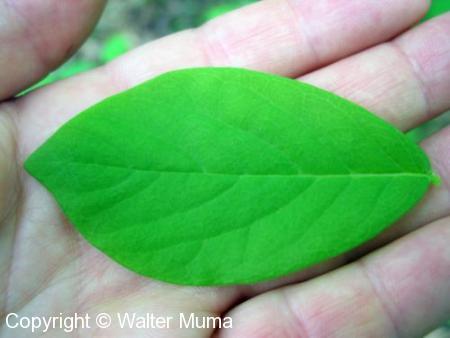
|
 |
Upper surface of a leaf. |
|
 |
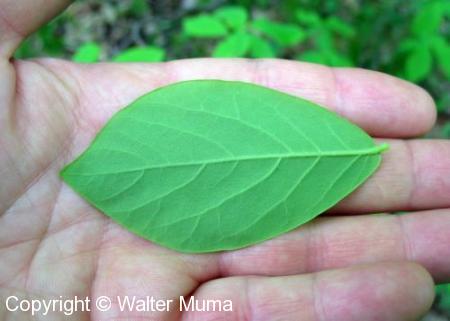
|
 |
Underside of a leaf. |
|
 |
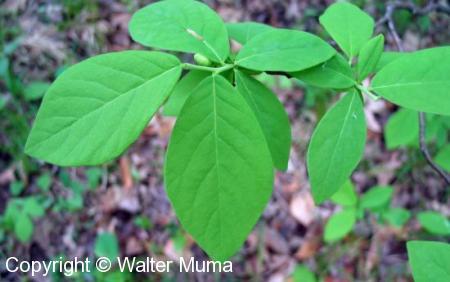
|
 |
Leaf arrangement. Sometimes the leaves are almost rounded at the tips, rather than pointed. |
|
 |
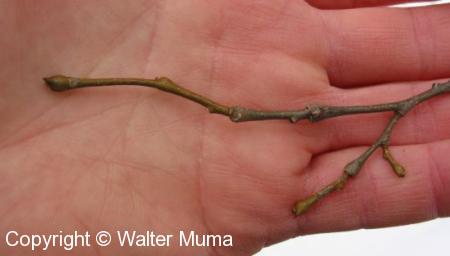
|
 |
Winter twig. |
|
 |
|
|
 |
|
|
 |
|
|
 |
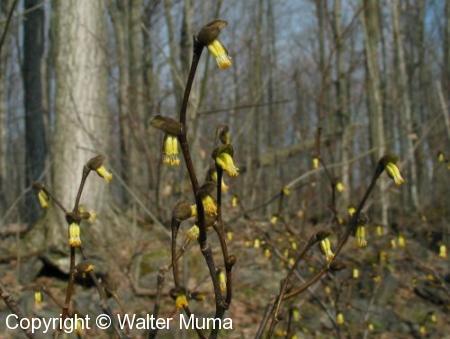
|
 |
In the spring, Leatherwood has small fragrant yellow flowers before any leaves come out. |
|
 |
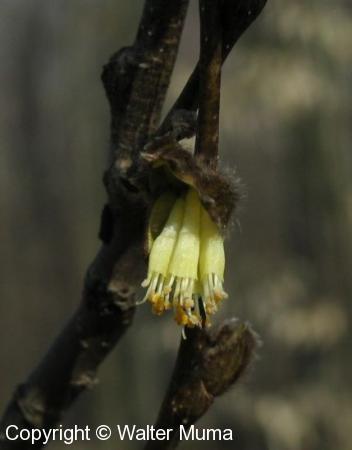
|
 |
Here's a close-up picture of a flower. |
|
 |
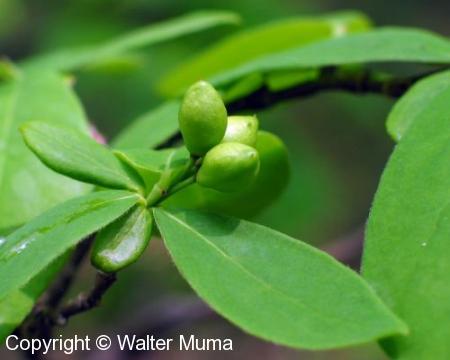
|
 |
Fruit forming in late spring (end of May). |
|
 |
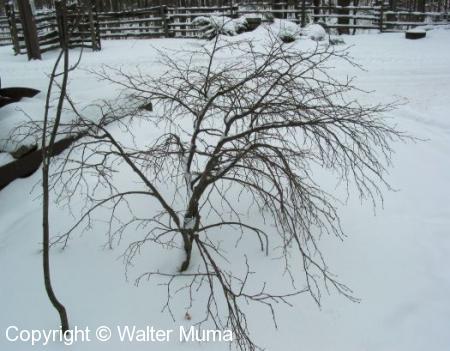
|
 |
This winter photo of Leatherwood shows the shrub's typical form. |
|
 |
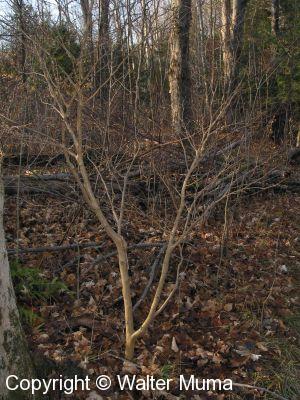
|
 |
Here's a couple more photos of Leatherwood in the winter. |
|
 |
|
|
 |
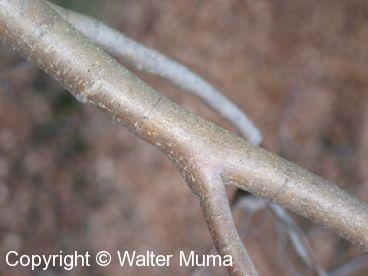
|
 |
Here are close-up pictures of the bark. |
|
 |
|
|
 |
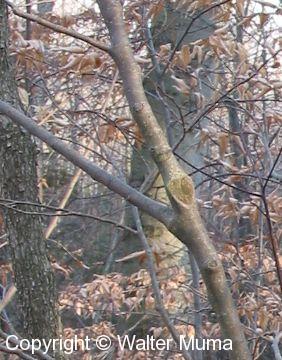
|
 |
And another, showing the characteristic marks that show along its stems. |
|
 |
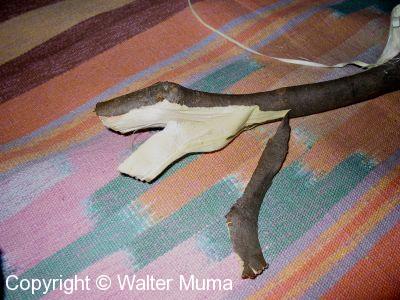
|
 |
Leatherwood as cordage...
This picture shows the bark fibers separated. There are at least two layers that can be used as cordage. No special preparation is necessary. Simply strip the bark off. (Of course, doing so usually kills or severely injures the plant!) Once peeled off, use as cordage. It is as tough as leather, and almost impossible to break! |
|
 |
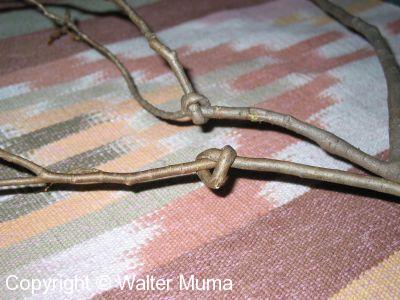
|
 |
This picture dramatizes the pliability of Leatherwood. The branches can actually be tied into knots while still alive! The bark is extremely tough and durable, whereas the actual wood inside is very weak, and breaks easily. However, with the bark still on, the branches can be tied into knots without breaking.
For more information about cordage from Leatherwood and other plants, please visit the Wildwood Survival website, cordage section. |
|
 |
|
|  |
 |
| |
|